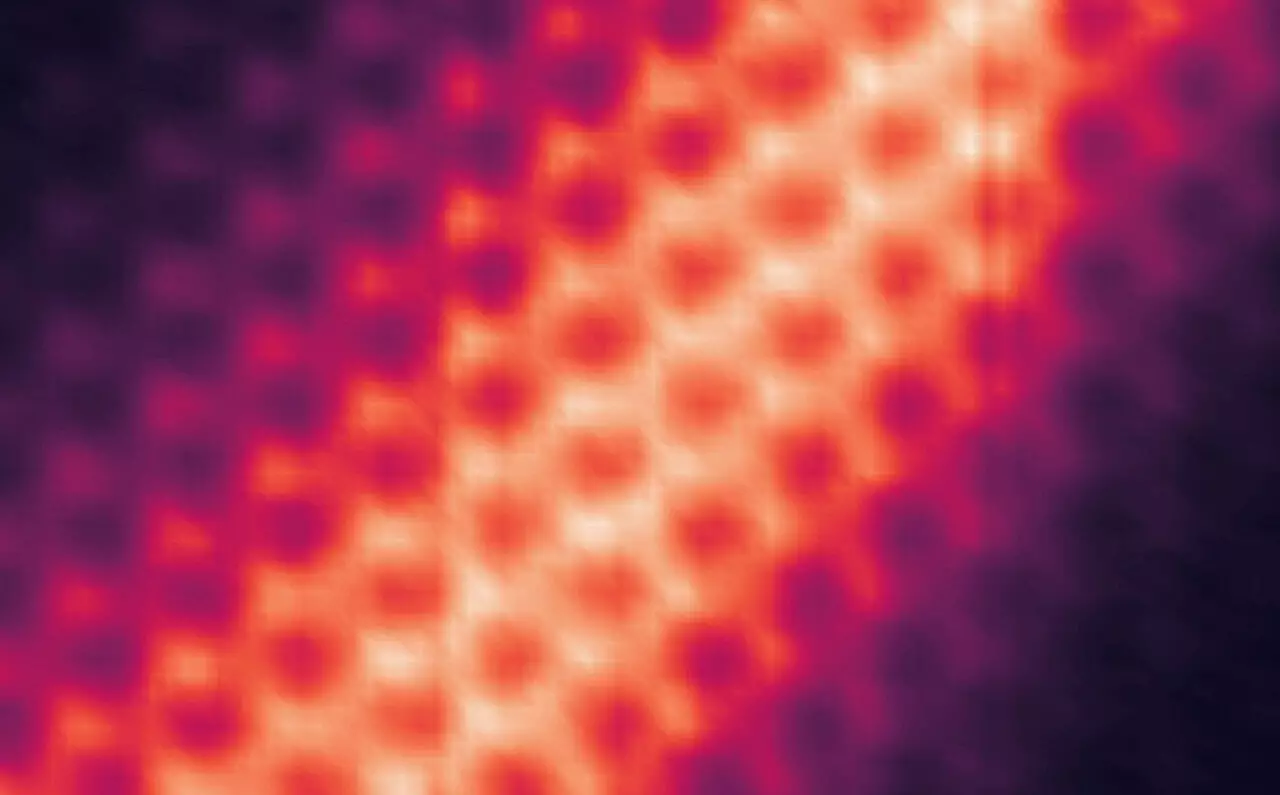An international research team led by Lawrence Berkeley National Laboratory (Berkeley Lab) has made significant progress in the field of quantum computing by capturing atomic-resolution images and demonstrating electrical control of a chiral interface state. This breakthrough could potentially revolutionize quantum computing and pave the way for energy-efficient electronics.
Chiral interface states are crucial conducting channels that allow electrons to move in only one direction, reducing energy wastage and electrical resistance. Although researchers have been striving to understand the properties of these states in real materials, visualizing their spatial characteristics has proven to be a challenging task. The recent achievement of capturing atomic-resolution images of a chiral interface state by the research team at Berkeley Lab and UC Berkeley marks a significant breakthrough in this area.
The research team employed a twisted monolayer-bilayer graphene device at Berkeley Lab’s Molecular Foundry to fabricate a moiré superlattice exhibiting the Quantum Anomalous Hall (QAH) effect. By utilizing a scanning tunneling microscope (STM) at the UC Berkeley Department of Physics, the team was able to detect different electronic states in the sample and visualize the wavefunction of the chiral interface state. Furthermore, experiments showed that modulating the voltage on a gate electrode beneath the graphene layers could move the chiral interface state across the sample.
The researchers also demonstrated the ability to control the chiral interface state by applying a voltage pulse from the tip of an STM probe. This manipulation allowed them to write, erase, and rewrite the chiral interface state, altering the direction in which the electrons flow. Such precise control over the behavior of the chiral interface state opens up new possibilities for building tunable networks of electron channels for energy-efficient microelectronics and low-power magnetic memory devices.
The findings of this research hold great promise for the future of quantum computing and the development of advanced quantum materials. By studying more exotic physics in related materials, such as anyons, researchers could potentially unlock new pathways to quantum computation. The ability to visualize and manipulate chiral interface states at the atomic scale provides valuable insights that were previously unattainable, paving the way for further advancements in the field.
The research conducted by the international team led by Lawrence Berkeley National Laboratory represents a significant milestone in the exploration of chiral interface states and their potential applications in quantum computing. By capturing atomic-resolution images and demonstrating electrical control of these states, the researchers have opened up new possibilities for the development of energy-efficient electronics and quantum information systems. Further research in this area could lead to groundbreaking technologies that harness the exotic quantum phenomena exhibited by chiral interface states, propelling the field of quantum computing into a new era of innovation and discovery.


Leave a Reply